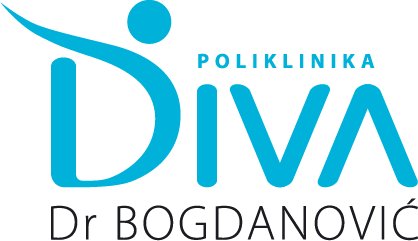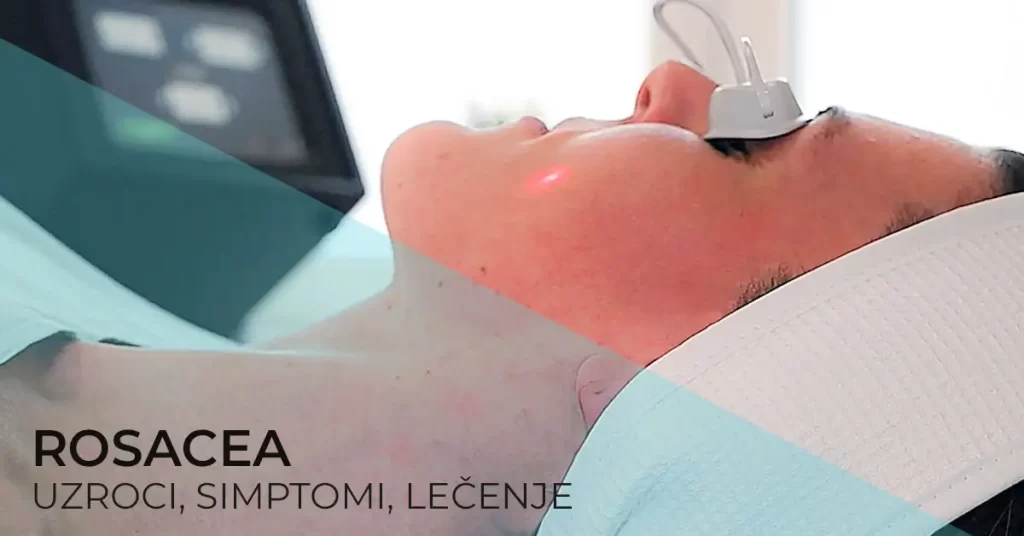The symptoms of rosacea worsen under the influence of extremely high and very low temperatures. For this reason, it is necessary to pay special attention to skin care during two seasons – summer and winter. However, there are other factors that lead to the deterioration of this skin condition, and we will talk about them later in the text.
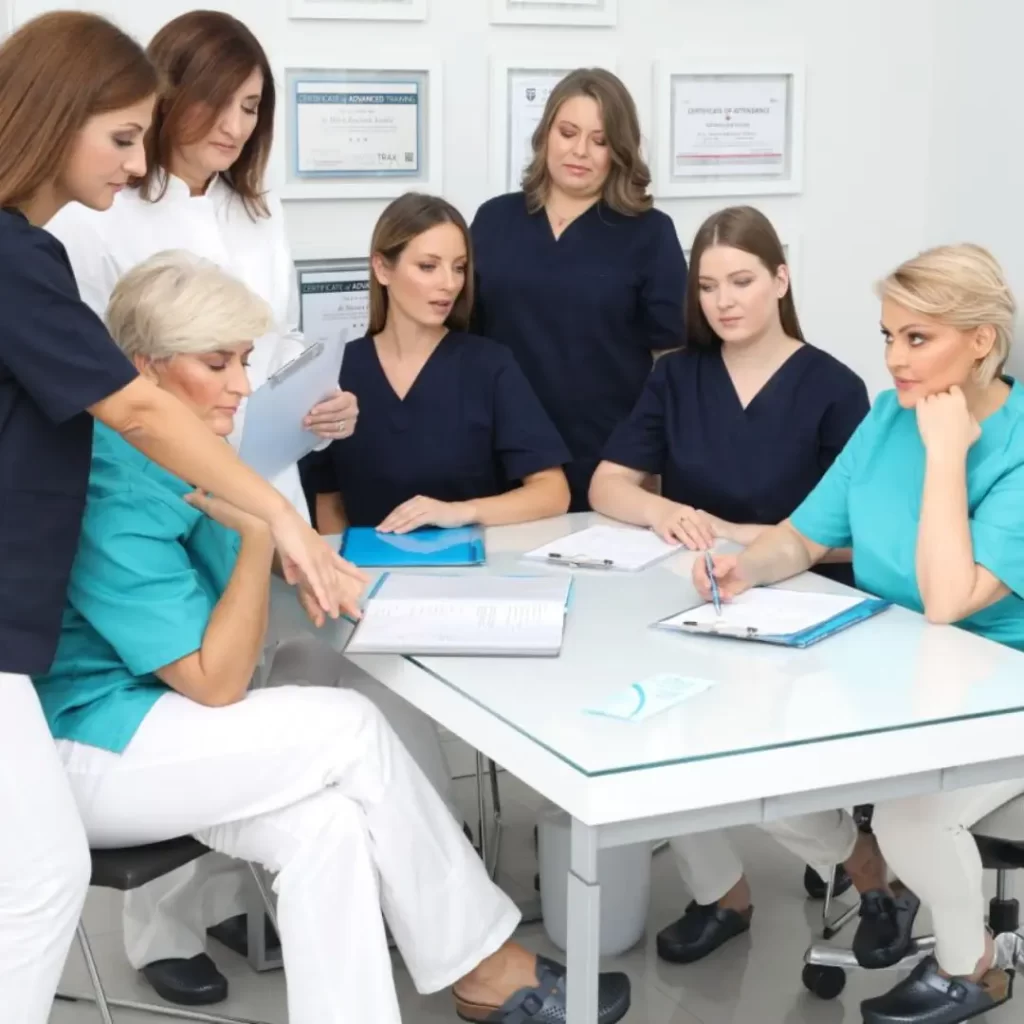
And rosacea laser treatment has been shown to be effective in suppressing its symptoms.
Rosacea treatment with laser - FREE consultation at Diva Polyclinic
You can schedule a FREE consultation for a laser treatment procedure for rosacea in Belgrade, Novi Beograd or Vračar with the doctors of the polyclinic Diva Dr. Bogdanović in one of our polyclinics or specialist dermatology offices:
Where does rosacea most often occur on the face?
Rosacea is a chronic and autoimmune skin condition characterized by redness and visible capillaries on:
- cheeks,
- beard,
- forehead and
- somewhat less often around the eyes.
Rosacea - treatment and therapy
For the treatment of rosacea, preparations in the form of creams, gels or lotions are used. They are applied to the face as recommended by the dermatologist.
However, it is important to emphasize that this skin disease cannot be completely cured. But if it is not treated, then the problem gets worse.
However, it IS POSSIBLE to keep it under control and alleviate its symptoms, i.e. remove redness, itching, burning, dilated capillaries and pimples, so that the skin has a healthy appearance.
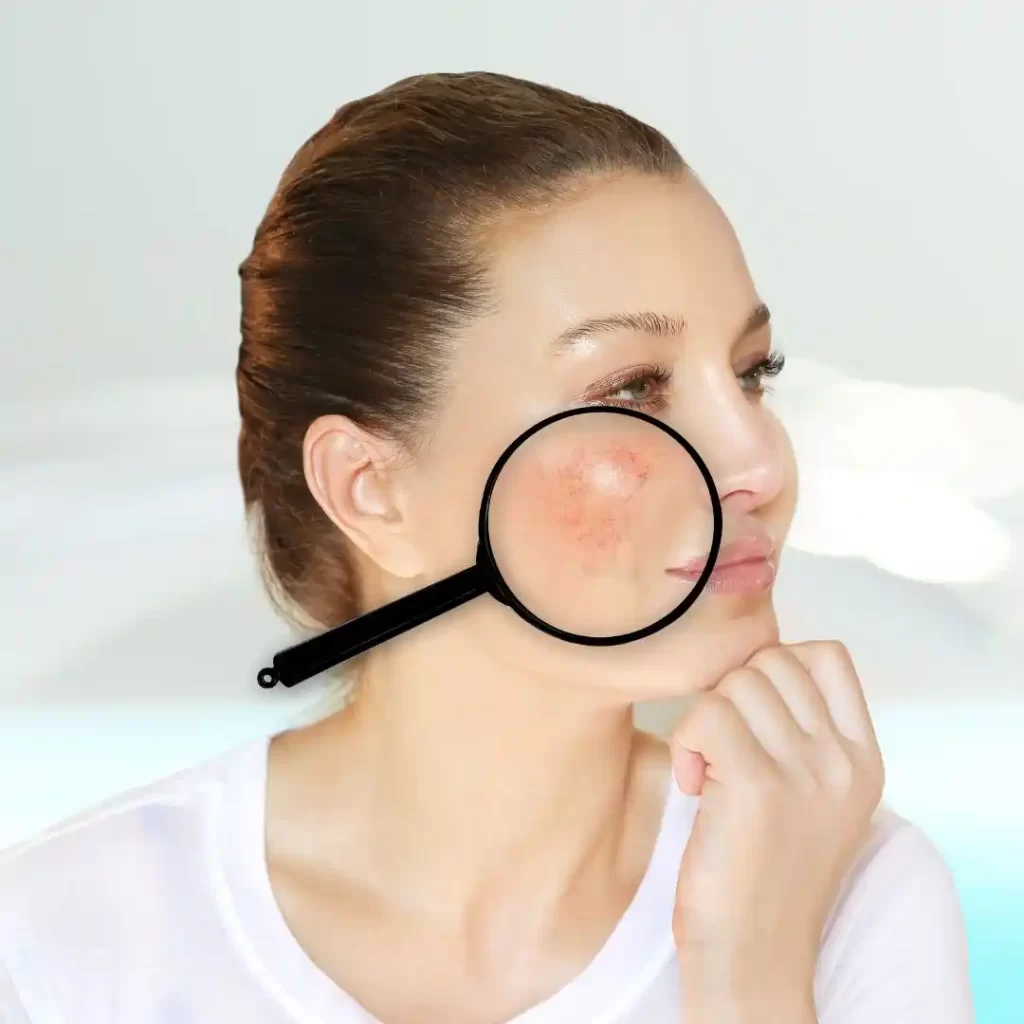
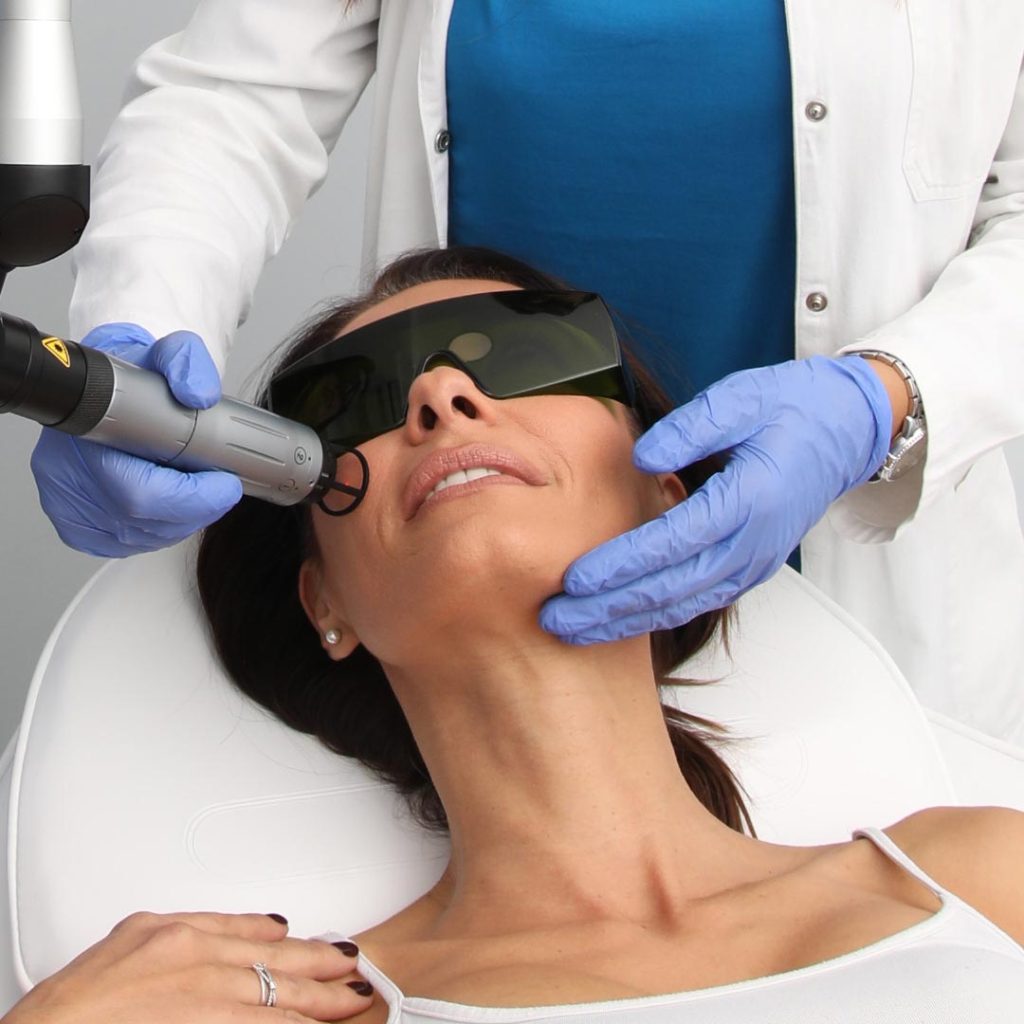
What should be followed when treating rosacea?
- Avoid the above-mentioned triggers: alcohol, heat, wind;
- In the sunny period, apply preparations with SPF 50+ UVA;
- Use neutral detergents and light creams as recommended by the doctor;
- In case of rosacea ocularis, in addition to detailed hygiene of the edge of the eyelids, supplement the therapy with the use of artificial tears several times a day;
- The cosmetic effect can be given by good camouflage cosmetics – preparations with green pigment;
- It is necessary to wash the face as gently as possible with lukewarm water and dry it with a soft towel
How is rosacea treated at the Diva Polyclinic?
This is done at the Diva Polyclinic using modern laser techniques for the treatment of rosacea and their combination.
Which lasers are used for rosacea laser treatment at Diva Polyclinic?
At the Diva polyclinic, dermatology specialists use 3 lasers to treat rosacea:
- D light SR
- Lumecca and
- Nd:Yag.
After that, the inflammation calms down, the complexion improves and the burning sensation decreases. These treatments need to be repeated from time to time. That is, when the symptoms reappear.
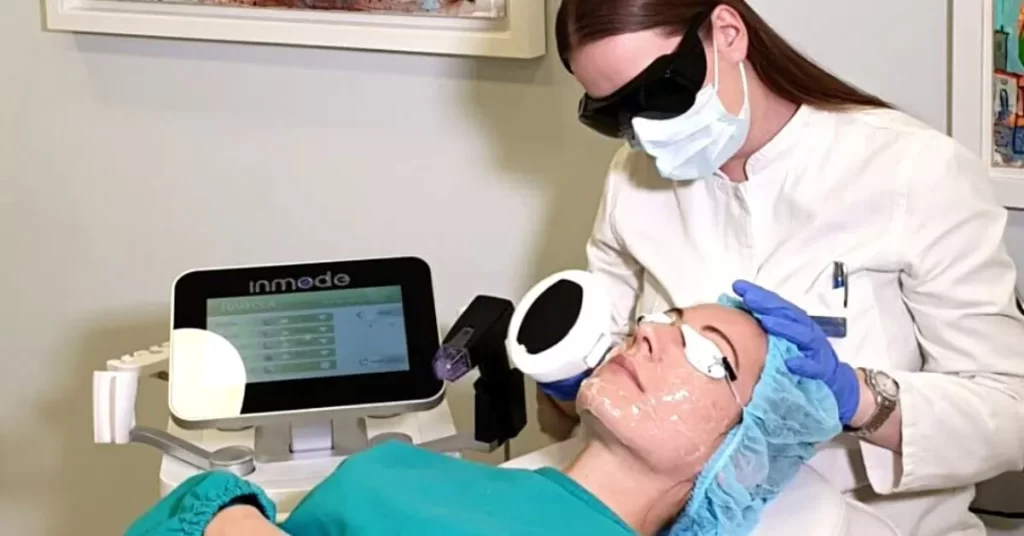
How did I cure my rosacea? Rosacea laser treatment - experiences - pictures
Patients who have opted for rosacea laser treatment are satisfied with the results achieved, because in this way they keep rosacea symptoms under control for a long time.
And after the laser treatment, the skin is without visible redness and tiny capillaries.
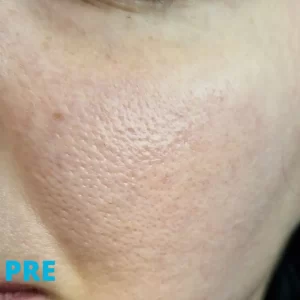

Who is susceptible to rosacea?
It occurs more often in people with lighter skin. Research shows that it is expressed in a greater number of cases in people who have a problem with migraine, as well as in people who have an A+ blood group.
Both men and women battle with this skin condition. Although it occurs more often in women, the symptoms are milder than in the male population. The assumption is that this is because women present to the doctor in the earlier stages of the disease.
In whom does rosacea occur most often?
In the general population, the disease most often occurs between the ages of 40 and 50. It is more common in women between the ages of 20 and 50.
In general, it is noticeably more pronounced in people older than 30 years, while the condition worsens in those between 40 and 50 years of age. Although cases were also recorded when the diagnosis was established in twenty-year-olds.
And what is rosacea?
Rosacea is a chronic inflammatory disease of the skin of the face. Although, it can also occur on other parts of the body such as the chest, ears, scalp and neck.
What are the causes of rosacea?
Although it has not yet been fully established why some people are more susceptible to it than others, several causes have been clearly identified:
Heritage
Research shows that 30% to 40% of members of a family get it.
Hormonal disorders
Different hormonal disorders can affect its occurrence or worsening of the condition. And it has been observed to occur or worsen during pregnancy.
Stress
It plays an important role as a trigger for its appearance in people who have a genetic predisposition.
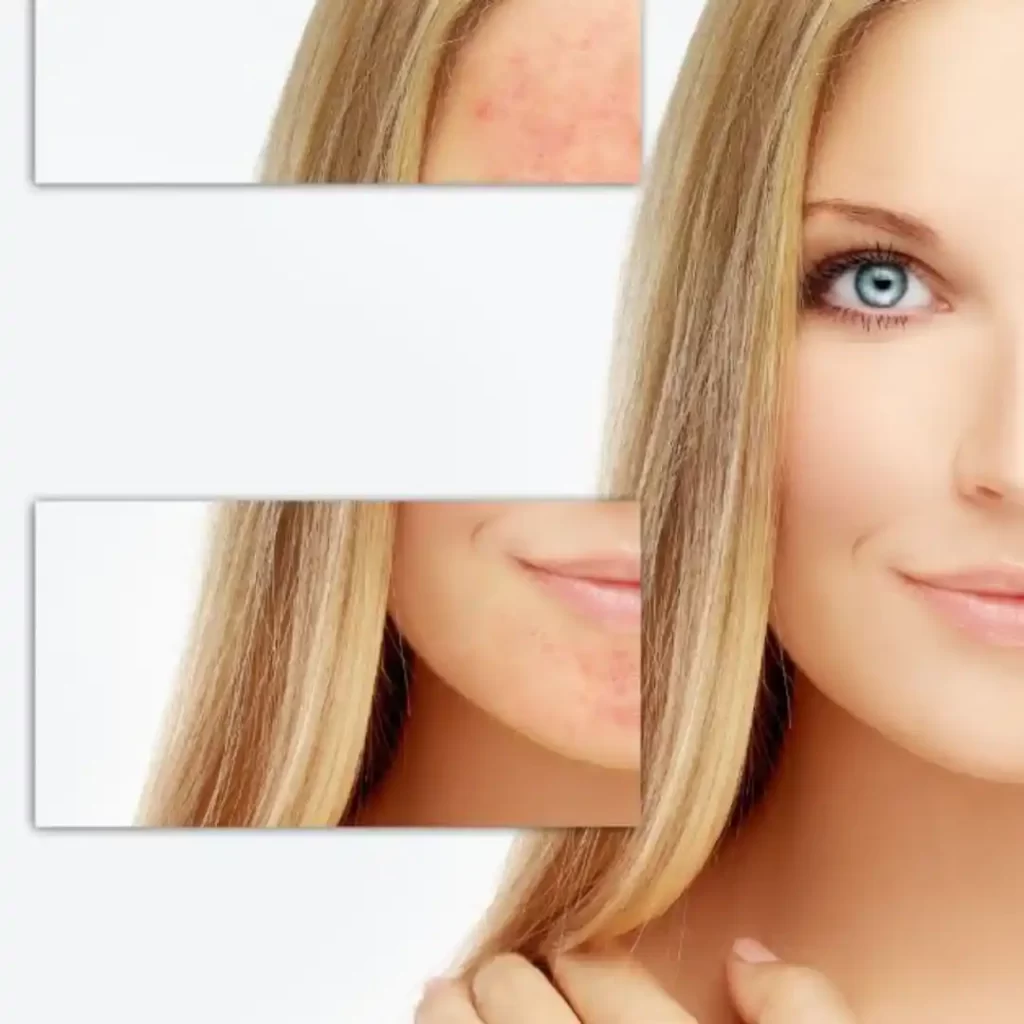
Sun
The sun’s rays and high temperatures play an important role because it is more pronounced when the skin is damaged by the sun.
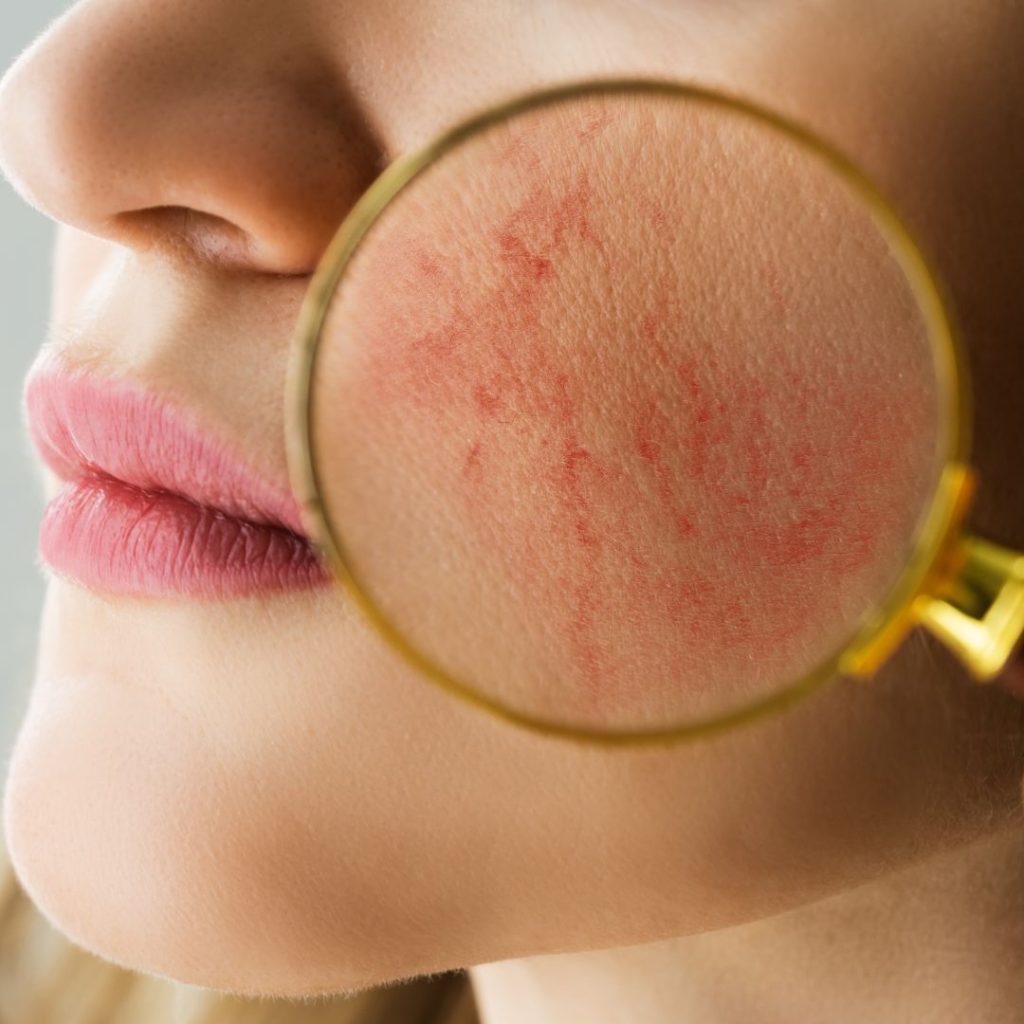
Demodex folliculorum
The connection was established by the noticeable relief of symptoms in patients after eradication of demodex.
Microcirculation disorder
Given that in the later stages it causes the visible appearance of blood vessels, people who are more prone to the expansion of blood vessels have more pronounced symptoms.
Medications
Some medicines additionally cause redness of the skin.
Low temperatures and wind
They cause frostbite and redness.
What are the symptoms of rosacea? How to recognize it?
The first signs are:
- skin redness, itching, burning, stinging,
- then visible dilated capillaries appear,
- and as time goes on, small pimples – acne rosaceae.
What does rosacea look like and what are the types?
In the following text, we will explain the different types of rosacea and how it manifests itself. There are:
4 clinical forms
We can recognize 4 types:
1. Rosacea erythematelangiectatica
- Redness,
- dilated capillaries,
- feeling of warmth and
- skin tingling
they are expressed in the central part of the face. It usually occurs in people who have a lighter complexion.
2. Rosacea papulopustulosa (mild and severe forms)
Changes appear on the skin that look like pimples, accompanied by swelling and redness.
3. Rosacea phymatosa - phymatous changes:
Enlarged pores, swelling, swelling and formation of excess tissue – skin are noticeable. This condition most often affects the nose region, but it can also occur on the chin or forehead, but rarely.
4. Ocular rosacea:
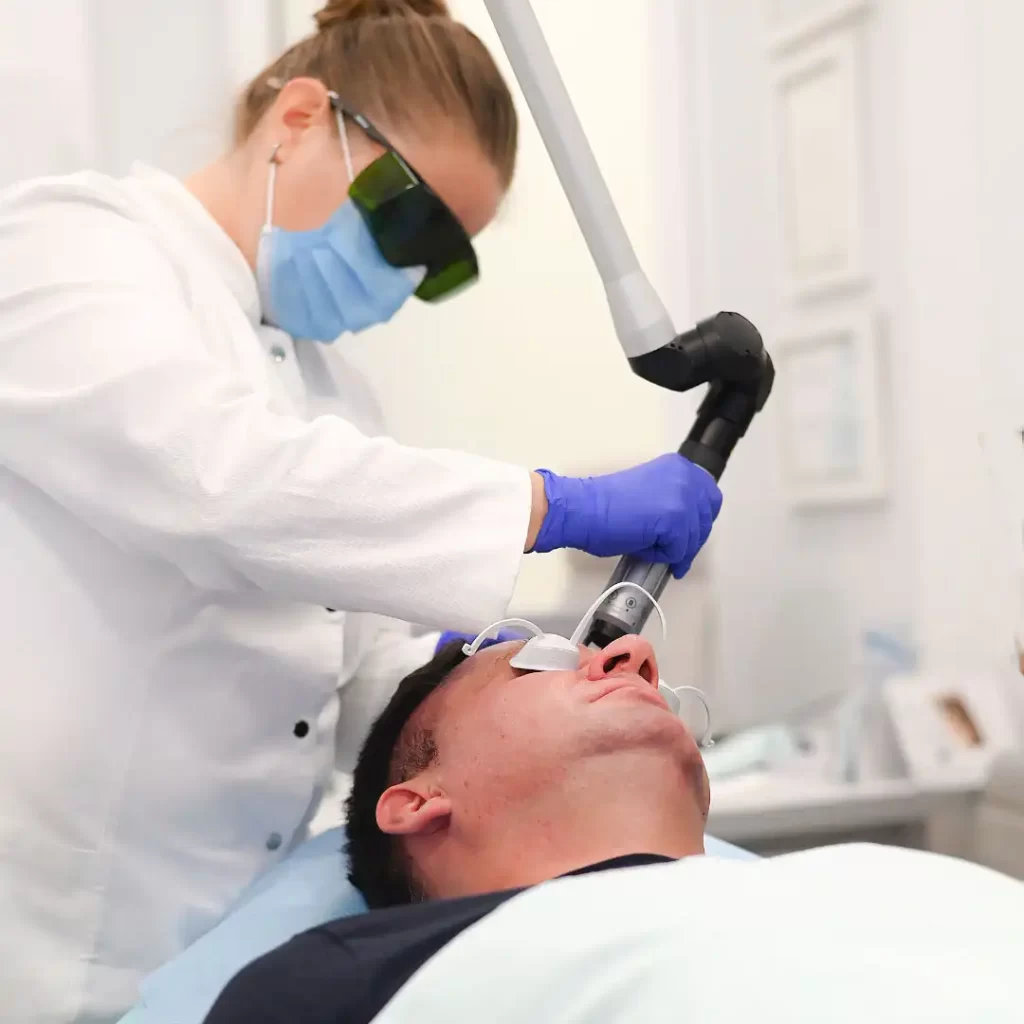
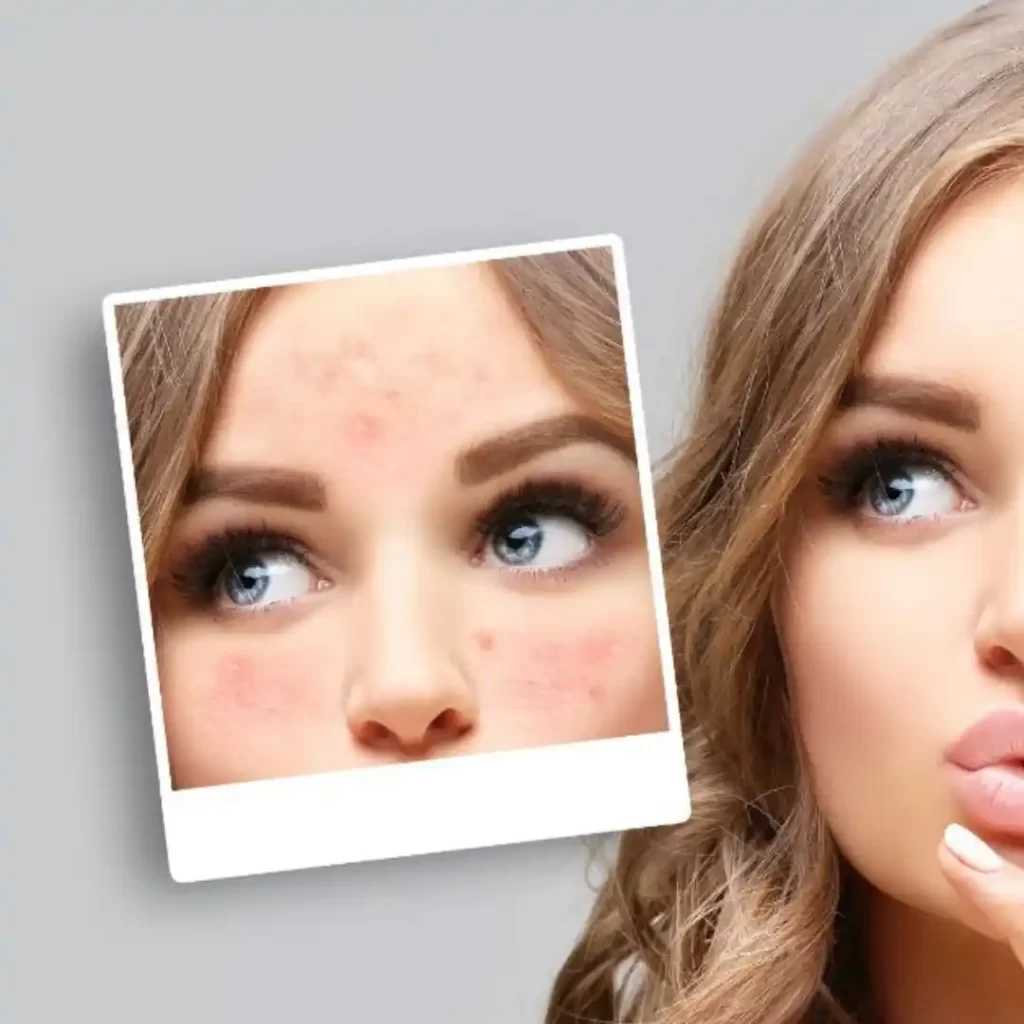
The most severe form of rosacea:
The most severe form is rhynophima and occurs more often in men. The changes are localized and visible on the nose. There is marked hyperplasia (swelling) of the skin, the tissue, i.e. the affected skin is shiny, smooth, and the pilosebaceous openings are enlarged and telangiectasias are noticeable.
Why is the situation getting worse?
Also, temperature differences (hot-cold), strong wind, alcohol, hot drinks, strenuous exercises, spicy food, emotional outbursts and certain medications, as well as high doses of vitamins B6 and B12 lead to an increase in symptoms.
Due to the use of corticosteroid ointments and creams or preparations that destroy or irritate the skin barrier, the condition worsens. That is why it is necessary to avoid the use of inadequate strong soaps, lotions with alcohol and face creams with perfume.
Is rosacea contagious?
It is important to emphasize that rosacea CANNOT be transmitted to other people, but if it is not treated, it worsens over time.
What causes rosacea skin to worsen?
Patients suffering from rosacea are often advised to avoid, as much as possible, things that can aggravate this skin condition such as:
- extremely high temperatures
- sunbathing and solarium
- very low temperatures
- aggressive skin care products
- stress
- strong spices
- alcohol
- lotions and cosmetics containing alcohol
- hot food and drink
- corticosteroid ointments and creams
- wind
- hot drinks
- great physical exertion and excessive sweating
- drugs (amiodarone, nitrates, nasal steroids, high doses of B-6 and B-12 vitamins…)
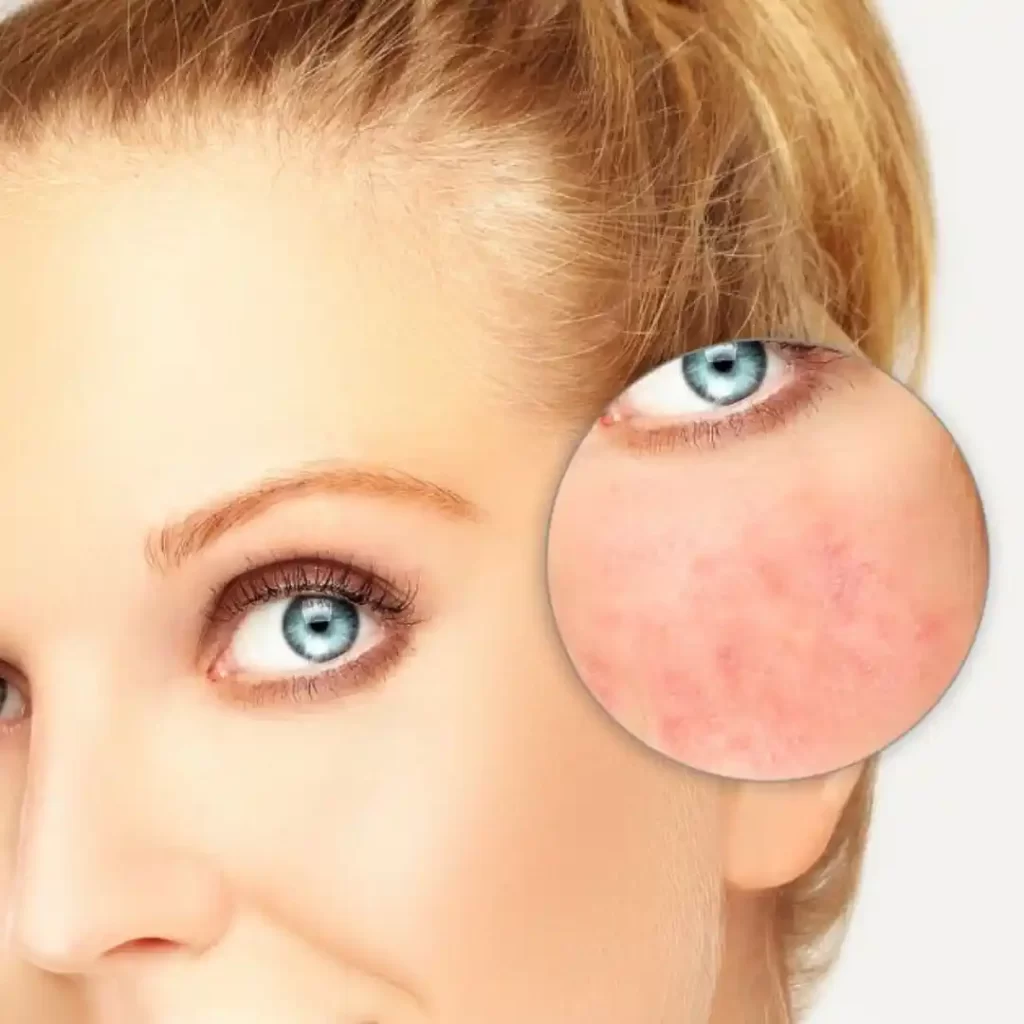
The most important thing is to recognize the factors that influence the deterioration of the condition and avoid them as much as possible. Otherwise, further development of the disease occurs despite therapy.
Rosacea laser treatment - price:
The price of rosacea laser treatment at the Diva Polyclinic is from 120 to 180 euros in dinars. And it depends on the size of the region being treated. For prices of other services, see our PRICE LIST.
NOTE:
Whether this procedure is the right choice for a certain type and condition of the skin will be assessed by a specialist doctor during a free consultation, and accordingly propose an adequate procedure. How many treatments are needed is individual and depends on several factors.
The results of the procedure may vary from patient to patient and are influenced by a number of factors including genetics, hormonal status and lifestyle of each individual.
You can read the entire disclaimer HERE.
Appointment for a free consultation for the rosacea laser treatment procedure in Belgrade
At the polyclinic Diva Dr. Bogdanović Belgrade, with our doctors specializing in dermatology and aesthetic surgery, you can schedule a FREE consultation for a pre-procedure examination for laser treatment of rosacea in one of our polyclinics or specialist dermatology offices:
to one of the phone numbers 063 338 334 or 011 3242 841 or to the email info@divaclinic.com
Our specialist doctors will tell you during the examination what kind of results you can expect after this procedure.
You can schedule an examination or procedure
· every working day from 9 a.m. to 8 p.m
· and on Saturdays from 9 a.m. to 3 p.m.
